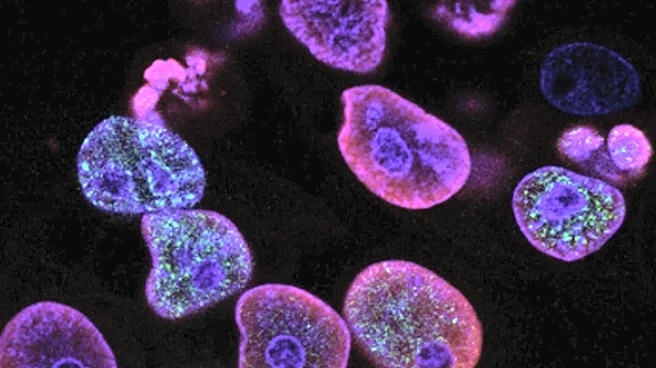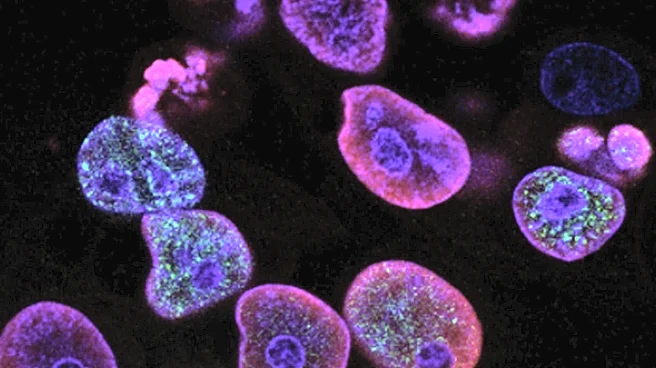What's Happening?
Recent research has highlighted the potential of TIM1+ Breg cells in mitigating myocardial ischemia-reperfusion injury (IRI). The study focused on the effects of RMT1-10, a compound that appears to enhance the number of TIM1+ Breg cells and regulate inflammatory responses. In a controlled experiment using a mouse model, RMT1-10 was shown to reduce myocardial infarction size and decrease the number of apoptotic cells. The treatment also improved the structural integrity of myocardial cells, as observed through various staining and microscopy techniques. Additionally, RMT1-10 increased the expression of anti-inflammatory cytokines like IL-10 while reducing pro-inflammatory markers such as TNFα and IL-6. These findings suggest that RMT1-10, through its action on TIM1+ Breg cells, could offer a novel therapeutic approach to managing myocardial IRI.
Why It's Important?
The implications of this study are significant for the field of cardiology, particularly in the treatment of myocardial ischemia-reperfusion injury, a condition that can lead to severe cardiac damage and is a major concern in heart attack recovery. By enhancing the body's natural anti-inflammatory responses, RMT1-10 could potentially reduce the extent of heart damage and improve recovery outcomes for patients. This research could pave the way for new treatments that focus on immune modulation, offering a different approach compared to traditional therapies that primarily target the heart muscle directly. If these findings are replicated in human studies, it could lead to significant advancements in how myocardial injuries are treated, potentially reducing healthcare costs and improving patient quality of life.
What's Next?
Further research is needed to confirm these findings in human subjects. Clinical trials will be essential to determine the safety and efficacy of RMT1-10 in humans. Additionally, understanding the precise mechanisms through which TIM1+ Breg cells exert their protective effects could lead to the development of more targeted therapies. Researchers may also explore the potential of combining RMT1-10 with existing treatments to enhance overall therapeutic outcomes. The study's findings could stimulate interest in the broader application of immune modulation in other inflammatory conditions beyond myocardial IRI.
Beyond the Headlines
The study also raises interesting questions about the role of immune cells in cardiac health and disease. The ability of TIM1+ Breg cells to modulate inflammation suggests that similar strategies could be applied to other diseases characterized by excessive inflammation. This could lead to a broader reevaluation of how immune cells are targeted in various inflammatory and autoimmune diseases. Furthermore, the research highlights the importance of interdisciplinary approaches, combining insights from immunology and cardiology to develop innovative treatments.










